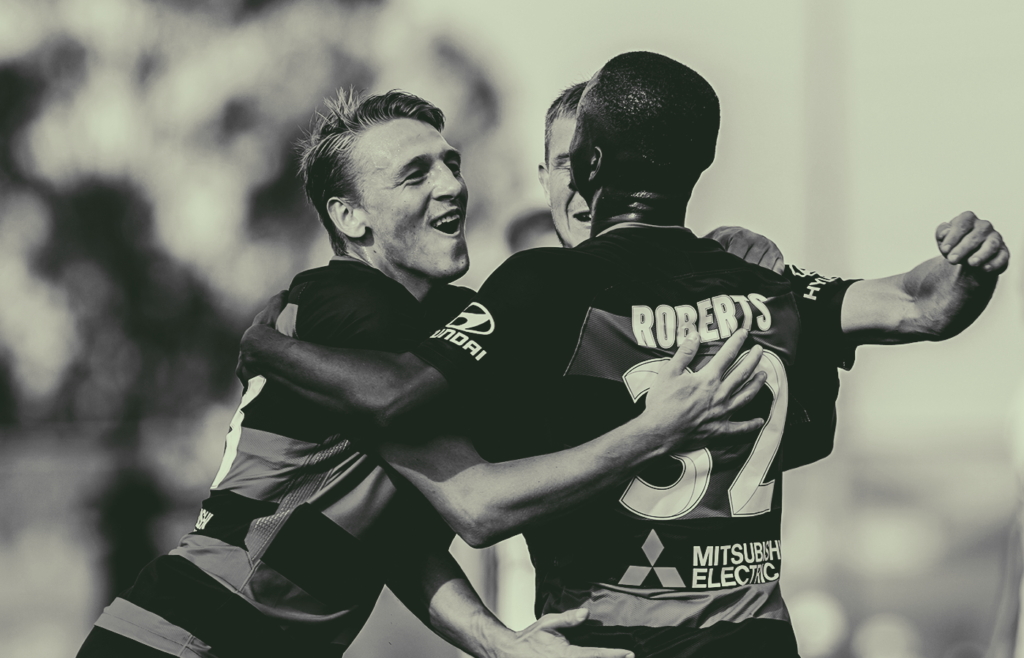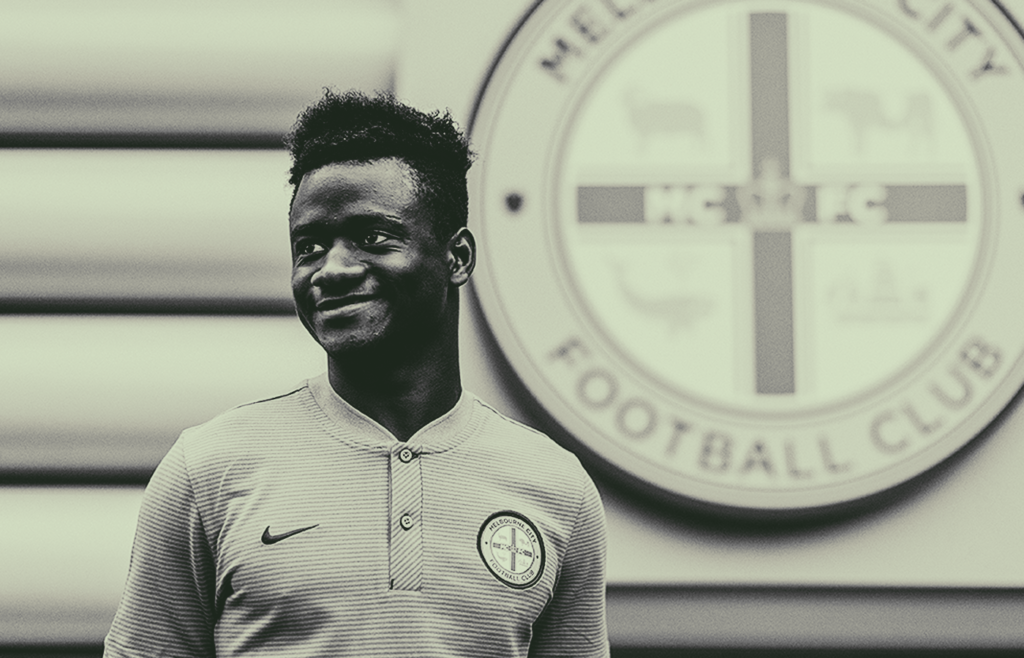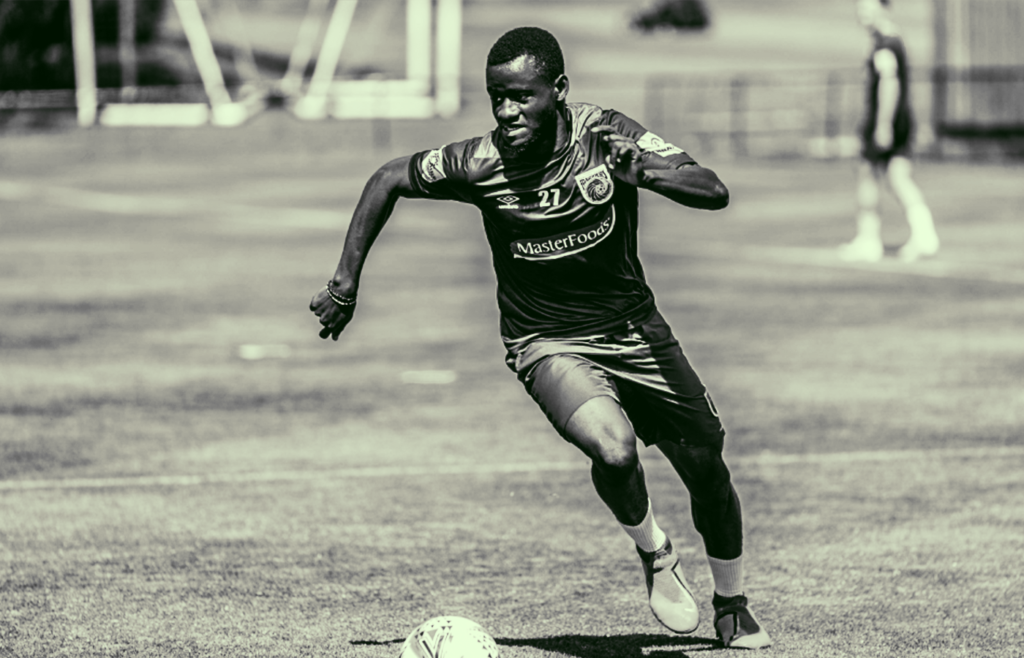Striker John Roberts has seen quite a lot of the Y-League.
Born in Guinea and arriving in Australia as a refugee, a stellar youth career in Sydney’s west saw Roberts captain Australia at a junior level and earn a place at the FFA’s Centre of Excellence in Canberra, before he signed with Melbourne City FC. However, despite impressing in Victoria, personal reasons soon led him back home to Western Sydney.
Released by the Red and Black at the end of the 2018/19 season, he briefly landed with Mount Druitt Town Rangers before landing on the Coast in October.

“[The Y-League] is only eight games, and sometimes you don’t play eight, maybe it’s just four or five because you’re trialling with the first team or you’re the 17th or 18th man and you don’t get to play. In my opinion, for young players I think the youth league needs to go to a full season because I just think it will benefit us young players, it will give us more opportunity when we’re not playing.
“There’s not much time to get more games under your belt. For example, in Europe, the U21 leagues go for a full season and they play against the other clubs, if the young players are not playing first-team they’re still playing.
“But after the youth league finishes, you have to wait a while and then play NPL1 or NPL2 or just wait for your opportunity in the A-League.”

The greater continuity and ability to settle into a season, as well as the improved chances to impress A-League coaches, would go a long way towards improving player retention in the young attacker’s eyes.
“It would have benefited me a lot because you have a chance to stay in one club, rather than trying to find an opportunity just to get some games in the first team or find a way to get game time.
“If there are more games in the youth league I don’t think many young players will change clubs as much or move to another team just to get game time. If you’re playing week in and week out in the youth league, I’m sure that will, once you’re impressing, give you an opportunity in the first team.”
The pursuit of continuity is of particular importance to a player like Roberts who, as a striker, is called upon not only to contribute to games when he receives chances at a senior level but actively change them.

That task, already hard enough by the sudden increase in speed, physicality and tactical understanding required at the top level, is compounded if a young player has to make the step up from a lower level in the NPL.
“For a striker, you have to pretty much play regularly week in and week out, if you’re not doing that you’re just training and waiting, and waiting and waiting and it’s hard to stay switched on or switch on the light.
“You have to play regularly in higher competitions. If you’re playing NPL1 or NPL2 and you get called up into the A-League, the intensity of the game is too different because you’re not used to that and you don’t play in a high enough competition.”







